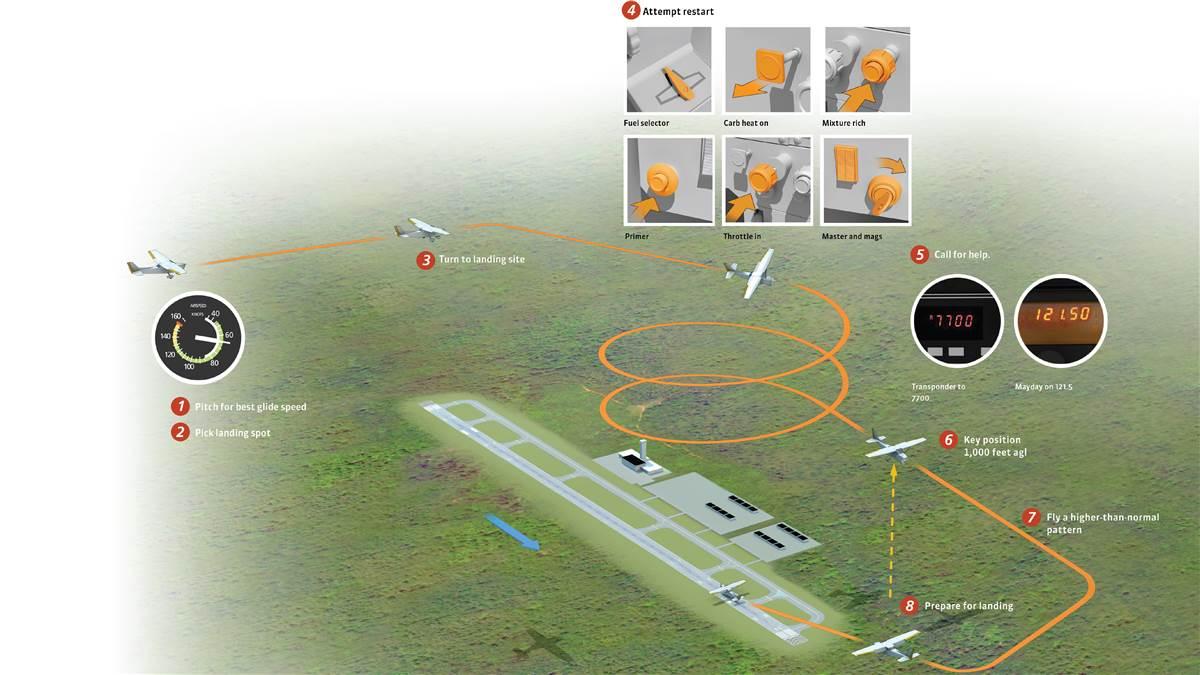Technique - Emergency approach and landing
Time to be a glider pilot
Reliable as they are, airplane engines sometimes fail. It happens often enough that we practice landing as a glider, just in case. The emergency approach and landing is something of an art form, requiring quick thinking, good judgment, and just a little bit of rote memorization.
It’s more likely that rather than fail without warning, an engine will lose power and try to valiantly soldier on before falling apart. That said, the FAA requires we demonstrate a technique for a full and immediate failure, usually from a moderate cruising altitude.
1. Pitch for best glide speed. The pilot’s operating handbook includes a speed that will take the airplane the farthest horizontal distance. Unless the landing site is close, pitch for that speed immediately.
2. Pick a spot to land. Selecting and committing to a landing site is one of the hardest parts of this maneuver. An open farm field with low or no crops is the best option. Although it might seem like a road is the best choice, cars and power lines are serious obstacles. Once you pick a spot, commit to it unless a closer, better spot presents itself. You might even be within range of an airport.
3. Turn to the spot. In almost every case, it is smart to make an immediate turn toward the landing site. Don’t worry about being high. The time to lose altitude is later. Early in the maneuver it’s more important to reach the site.
4. Try to restart the engine. Complete this step only if there is time and you are sure you can do it without losing control of the airplane. Memorize the airplane’s restart checklist so you don’t need to pull one out for reference. Better yet, complete a flow from bottom to top that includes the necessary items, such as fuel, mixture, primer, and so on. Verify with the checklist only if you have many thousands of feet to lose.
5. Call for help. Set the transponder to 7700 and call a Mayday. If you’re already working with air traffic control, make the call with them. Otherwise make the call on 121.5.
6. Aim for the key position. Your biggest chance of success lies with recreating a normal landing. With this in mind, arrive at a downwind position at 1,000 feet above and abeam the landing site.
7. Fly a normal pattern. Keep it a little tighter than normal. Try to make a normal landing, using flaps only after you know you can make the landing site.
8. Prepare for landing. In an actual emergency, turn off the fuel supply and electrical master switch and magnetos and open the doors prior to landing.




